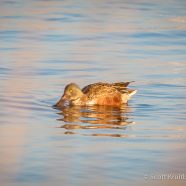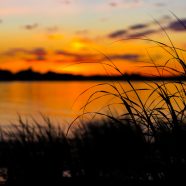Drake Northern Shoveler
I finally had the chance to properly photograph a beautiful drake Northern Shoveler (Anas clypeata) late last winter. This bird was on the way north for the breeding season, stopping off at a warm spot along a river marsh. I post him now because earlier this week a colleague of mine saw a small flock of Northern Shovelers flying by on the way south already! It is hard to believe we are that deep into the season, but the winter waterfowl are on the way. What is your favorite species of duck? Any you can’t wait to add to your life list? Scott Kruitbosch Conservation & Outreach...
Read MoreDrake Northern Shoveler
Here is a better and more fitting look at a drake Northern Shoveler (Anas clypeata) and the special bill it uses to filter everything from small invertebrates to seeds from the water. It makes you wonder why other ducks don’t have such a terrific adaptation…
Read MoreNorthern Shoveler
This drake Northern Shoveler (Anas clypeata) was one of several swimming and feeding in an unfrozen treatment plant outflow on a recent evening. I took a distant shot through grass so as not to flush them. Even eclipse plumage cannot hide that identification thanks to that enormous bill! Scott Kruitbosch Conservation & Outreach Coordinator
Read MoreGadwall Sunset
I photographed this spectacular sunset last week at Stratford Point while attempting to give it a number of different looks by changing lenses and positioning. A friendly Gadwall felt a little less friendly once it saw me approaching the water, but you can still see the duck behind the spartina in the first photo. That spartina is slowly regenerating and growing in to the intertidal zone, helping to protect and preserve the low energy side of the site from tidal and wave action. There are still plenty of pools for long-legged waders to feed in on small fish like sand lance, and there are...
Read MoreLoch Ness Monster?
Loch Ness Monster? Ut oh, it’s surfacing, and it’s looking directly at me! Or maybe not…but close enough in look and unfortunately somewhat in status. Horned Grebes (Podiceps auritus) are listed on the International Union for the Conservation of Nature (IUCN) Red List of Threatened Species as “Vulnerable”. We often do not get to enjoy them close-up like these views I was afforded last week. While their wintering plumage is meant to camouflage them in the water, their piercing red eyes are a bright beacon on even the dullest of late winter days. Keep an eye out...
Read More








